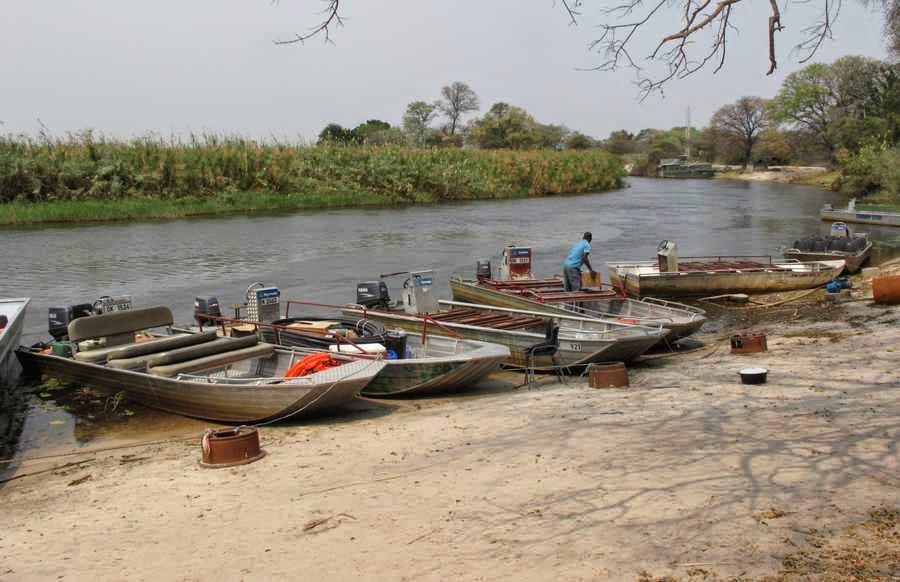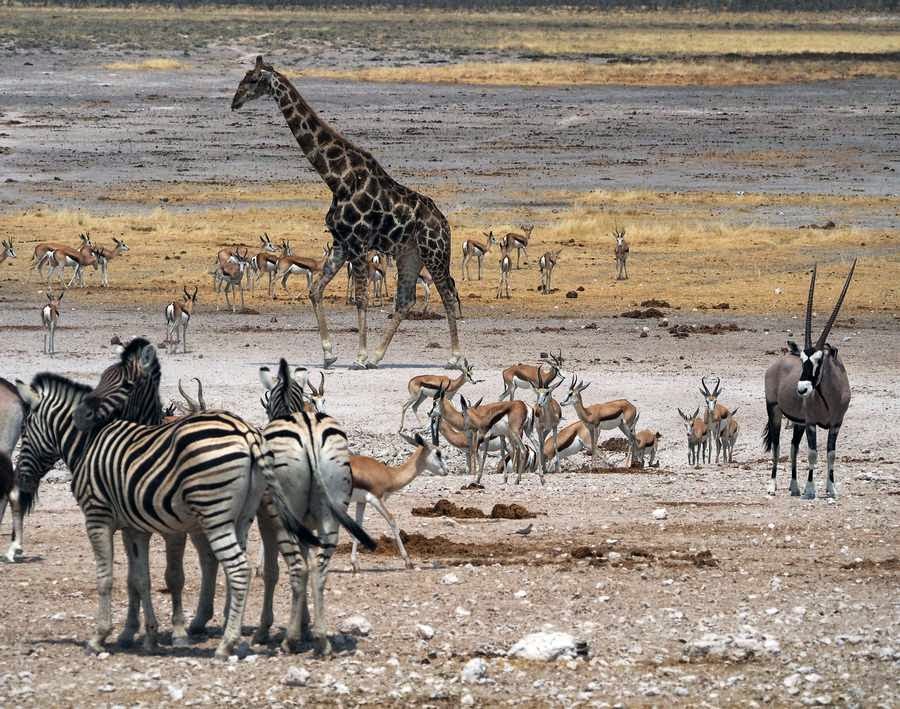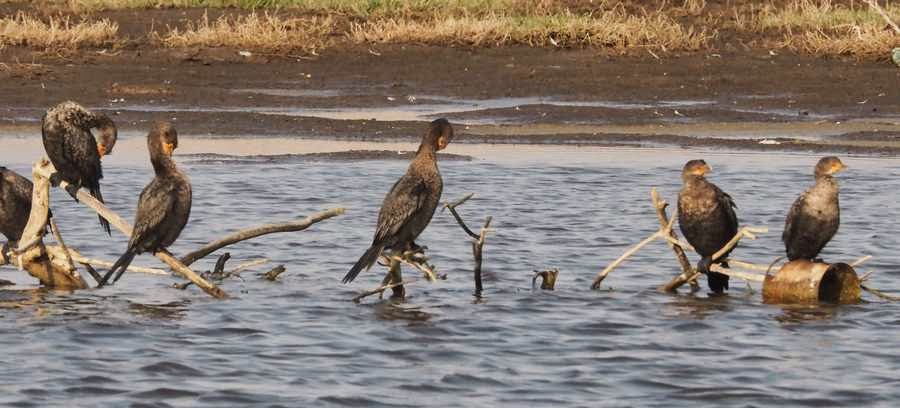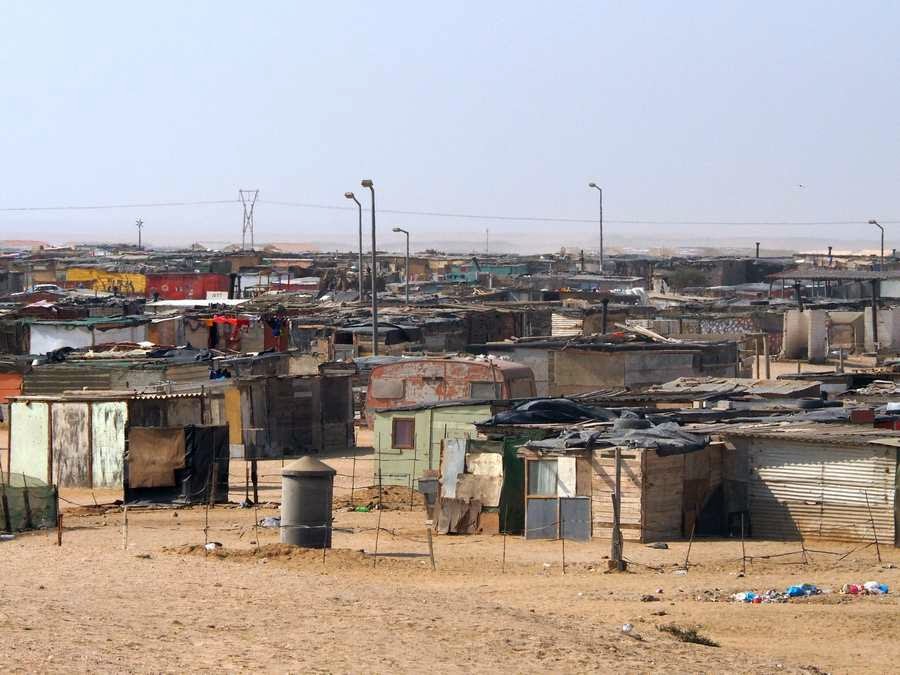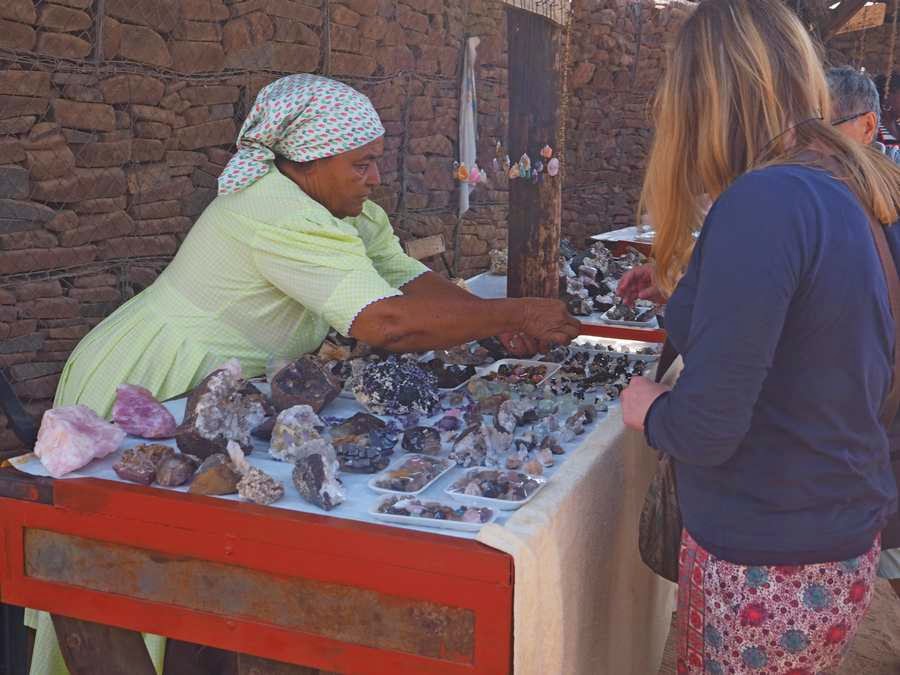Botswana was the British protectorate of Bechuanaland and became independent in 1960. Its 2 million people are poor, but not long after independence diamonds were discovered and the income has mostly been wisely spent.
After crossing into Botswana we drove to Sapupa where we transerred to a speed boat for a 2 hour ride up to Inkwazi our houseboat. The maze of channels is fringed with papyrus and reeds with here and there islands with palms and other trees. There is lots of birdlife and plenty of crocodiles although on the way in we only saw two. There were lots of birds - herons, cranes, fish eagles, skimmers etc.
The houseboat is fine. Sebastian, the Zimbabwean captain keeps the boat shipshape and cooks good meals in a tiny space. Another sunset and then up not long after sunrise and an excursion by speed boat and mokoro or dugout canoe to one of the islands.
In the afternoon 5 of us went for a flight over the delta. Flying at 500 feet it was a vast expanse of marshes, channels and islands. We did not actually see a lot of animals but there are elephants and Cape buffalo amongst others.
Monday 22nd Sept
We left the Inkwazi and the delta. It was early morning and there were lots of crocodiles warming themselves wherever there was a bit of sandy bank.
Boat people crossing the Kavango river the border between Angola and Namibia
Roadside scene
Botswana petrol station
Kitchen ware in a supermarket on the way to the Okovango delta
Our speed boats ready to board.
View from Inkwazi houseboat
Setting off to rendezvous at the makoro poling station.
Getting organised at the makoro (dugout canoe) poling station
Setting off
Water lilies
Island homes in the delta
Ready to go for our joy flight over the delta
Aerial view of the watery world
And another view from 500 feet. It just goes on and on.
A crocodile relaxing on the bank. It is estimated there is one crocodile everyone 100 metres.




